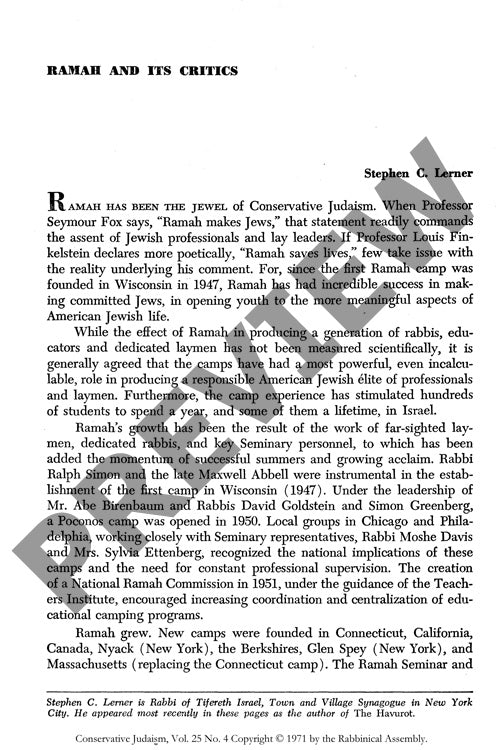Ramah and Its Critics
Couldn't load pickup availability
From its 1947 founding through 1970, Camp Ramah's rapid expansion from a single Wisconsin location to a network of seven camps exposed deep institutional and ideological fault lines within Conservative Judaism's flagship educational camping movement. As Ramah grew to serve nearly 4,000 campers annually, it faced mounting challenges that threatened its core mission of developing committed Jewish leadership. Through direct observation, interviews with directors, staff, and Seminary faculty, and analysis of program evolution across multiple sites, three critical vulnerabilities emerged: severe staffing shortages led to less Jewishly knowledgeable counselors; Hebrew proficiency declined markedly among both staff and campers; and financial difficulties escalated to operating deficits exceeding $50,000 with consolidated debt reaching $1.3 million. The introduction of experimental programming at camps in Nyack and Massachusetts - including social action projects, political discussions, and alternative religious practices - sparked particularly heated debates within the Conservative movement. While some praised these innovations as necessary responses to contemporary youth concerns, Seminary faculty argued they undermined traditional Jewish learning and observance. Though Ramah's fundamental mission remained viable, the movement's rapid institutional growth ultimately compromised both educational quality and financial stability. The findings suggest Ramah's future effectiveness hinges on systematically addressing staffing quality, Hebrew education standards, and achieving movement-wide consensus on appropriate programmatic boundaries.

More Information
-
Physical Description
-
Publication Information
Published 1971
ISBN
-
Publication Credits

